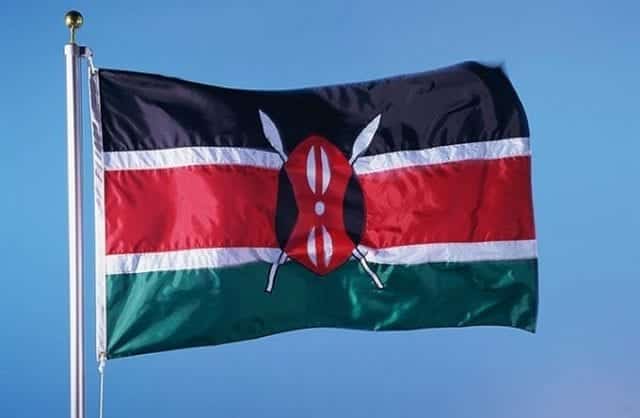
Kenya on Friday hit the road to becoming a middle-income nation in five months’ time after authorities said that a statistical review of the economy whose outcome would be announced in September was under way.
The review of national economic data – commonly known as rebasing – is expected to increase the size of Kenya’s GDP by a fifth, earning the country a middle-income status.
Kenya’s GDP – the market value of all goods and services the country produces in a year – is expected to grow to Sh4.3 trillion ($50 billion) from Sh3.6 trillion in 2013 – raising the defining per capita income to Sh97,696 ($1,136) up from a current estimate of $943 (Sh81,758), and above the benchmark of $1,036 (Sh89,821) set by the World Bank for middle-income nations.
The Kenya National Bureau of Statistics (KNBS) has said it will complete theexercise to update national accounts next month and announce the outcome in September earning Kenya a middle-income status 16 years ahead of the 2030 date set in the country’s Vision 2030 development blueprint.
he new economic data is expected to cement Kenya’s position as East Africa’s biggest market and Africa’s fourth-largest economy after Nigeria, South Africa and Angola.
Analysts said that although becoming a middle-income country is good for Kenya’s standing as aninvestment destination, it was bound to come with its own challenges, including loss of access to key markets it currently trades in under special terms as a poor country.
“A bigger economy means Kenya needs less support and will not be eligible to access key export markets on preferential terms,” said Robert Shaw, an independent analyst.
“This is the price you pay for growing an economy. But it gives us an incentive to aggressively increase our trade and cut dependence on donor inflows and aid.”
As a middle-income economy, Kenya will no longer qualify for the many trade concessions it currently enjoys as a low-income country. The country will also lose its eligibility for grants, concessional loans and debt write-offs when its GDP per capita rises above the $1,036 threshold that the World Bank has set for middle-income nations.
Mr Shaw said Kenya’s honeymoon in the world of a newly-rich country would be short-lived as it will demand a speedy reaction from the Treasury mandarins and policy experts to devise new strategies that will shield the country from the curses that come with the status.
The development, which puts Kenya in a class of its own, is particularly expected to throw the ongoing economic partnership agreement (EPA) negotiations between East Africa and the European Union (EU) into a tailspin.
The talks, which seek to develop an international free trade treaty between the two parties, have dragged on with no end in sight mainly saddled by differences over access to markets.
Top on the list of key markets that Kenya may find difficult to access after the September rebasing is the US under the African Growth and Opportunity Act (Agoa) terms.
Fresh Produce Exporters Association of Kenya (FPEAK) also expect the recalculation of the size of Kenya’s economy to hit the agricultural sector hard as it will force the country to negotiate trade pacts with the developed world on equal terms.
“In principle, poor countries are given preferential trade agreements to help them grow and are seen not to pose any threat to mature markets but a newly reclassified Kenya will have to negotiate trade deals on an equal footing with Europe,” said FPEAK chief executive Stephen Mbithi.
Dr Mbithi added that donor support in the form of training, quality standards, equipment and technology for growers and exporters of fresh cut flowers, fruits, and vegetables is likely to be cut.
The high GDP figures also mean that the International Development Association (IDA) – the World Bank’s fund for poor countries – could suspend disbursement of a $2.9 billion (Sh249.4 billion) loan scheduled for Kenya later this year.
Kenya has been a key beneficiary of IDA’s highly concessional, long-term interest-free loans and grants which fund development projects meant to boost economic growth and reduce poverty.
The September rebasing will catapult Kenya into the club of industrialising nations that needs to be weaned off donor support and cheap funding.
The World Bank groups countries in three classes based on GDP per capita: low-income as those with $1,035 or less, lower middle-income from $1,036, upper middle-income at $4,086 and high-income economies at $12,616 or more.
KNBS data is currently based on figures from 2001 which will now be recast to 2009 – the new base year and reference point – to present an accurate reflection of Kenya’s economy.
Zachary Mwangi, acting director- general at KNBS, said the update was in line with international best practice and will help inform policy makers and analysts in decision making by obtaining an accurate set of economic statistics.
Nigeria last week reviewed its GDP to $510 billion to overtake South Africa as the largest-economy on the continent.
Kenya has since independence been classified as a low-income economy and considered a Least Developed Country in the ranks of peers such as Somalia, Central African Republic, Haiti and Bangladesh.
Kenya’s development blueprint dubbed Vision 2030 unveiled in the year 2008 aimed to transform Kenya into a newly industrialised economy by the year 2030.
“The vision aims to transform Kenya into a newly industrialising, middle-income country providing a high quality of life to all its citizens by 2030 in a clean and secure environment,” reads the preamble of the Kenya Vision 2030.
The long-term development plan identifies six priority sectors, namely tourism, agriculture, wholesale and retail trade, manufacturing, ICT and financial services, as key growth areas that will shape the Kenyan economy moving forward.
However, the new calculations will not translate to better living conditions for Kenyans as the country still faces challenges such as high unemployment, rising cost of living, insecurity and corruption.
The International Monetary Fund (IMF) last week said Kenya’s economy grew 5.6 per cent in 2013, which was a faster growth than the 4.6 per cent recorded a year earlier.
KNBS attributed the GDP growth to improved performances in financial sector buoyed by mobile money, transport and communication, wholesale and retail trade, manufacturing, construction and mining and quarrying activities.

The economy had been on a growth trajectory since 2007 and grew at a peak of 7.1 per cent before slumping to 1.5 per cent in 2008 blamed on the post-election violence following the December 2007 General Election.
Experts argue that some of the benefits of a larger Kenyan economy are raising the country’s profile to attract investors and creating room to chalk up more debt.
-businessdailyafrica.com/






